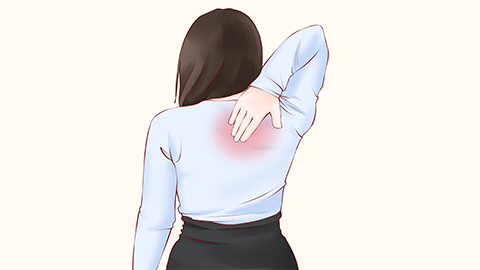What to do about back pain
Generally, back pain may be caused by poor posture, overexertion, cervical spondylosis, lumbar disc herniation, ankylosing spondylitis, and other factors. It is recommended to seek timely medical attention and follow a doctor's guidance for treatment, which may include general therapies, medications, and other approaches. A detailed explanation is as follows:

1. Poor Posture
Long-term bending, hunching, sitting, or standing in improper postures can place uneven pressure on the spine, disrupting its normal physiological curvature. This increases pressure on the cervical and lumbar vertebrae, causing surrounding muscles and ligaments to remain in a tense state for prolonged periods, leading to fatigue and strain, which can trigger spinal pain. One should correct poor posture, get up and move around periodically, and perform appropriate stretching exercises regularly.
2. Excessive Fatigue
Engaging in heavy physical labor for extended periods, such as lifting heavy objects, or participating in high-intensity sports training, such as long-distance running and weightlifting, can overwork the muscles and ligaments around the spine. This can lead to excessive lactic acid buildup and potentially cause minor spinal injuries that result in pain. It is important to ensure adequate rest and avoid overexertion. Muscle fatigue can be relieved through heat application, massage, and other methods.
3. Cervical Spondylosis
Cervical spondylosis is caused by long-term cervical strain, bone spurs, and other factors that compress the spinal cord, nerve roots, or vertebral artery in the neck, causing a range of symptoms. It may lead to neck pain that radiates to other parts of the spine, and cause neck muscle tension and spasms, further exacerbating spinal pain and discomfort. It may also be accompanied by symptoms such as dizziness and headaches. Treatment may include medications such as Celecoxib Capsules, Etoricoxib Tablets, and Gentongping Granules, under a doctor's guidance.
4. Lumbar Disc Herniation
Lumbar disc herniation is typically caused by degeneration or injury of the intervertebral discs, which may result in partial or complete rupture of the fibrous ring and protrusion of the nucleus pulposus. This irritates or compresses the nerve roots or cauda equina, triggering local inflammatory reactions that stimulate surrounding nerve endings, causing pain. It may also be accompanied by radiating leg pain and muscle atrophy. Patients may follow medical advice to use medications such as Meloxicam Tablets, Zhuangyao Jianshen Pills, and Shujin Huoxue Tablets for treatment.
5. Ankylosing Spondylitis
Ankylosing spondylitis is an autoimmune disease potentially linked to genetic, infectious, and immune factors. The immune system attacks spinal joints and surrounding tissues, causing inflammation of the spinal joints, bone destruction, and fibrosis, resulting in pain. Symptoms such as lower back pain and stiffness may also occur. Treatment may include medications such as Sulfasalazine Enteric-coated Tablets, Methotrexate Tablets, and Leflunomide Tablets, as recommended by a physician.
In daily life, maintaining good posture is important. Avoid prolonged periods of looking down, bending over, or sitting. Engage in appropriate physical exercise to strengthen the muscles around the spine. Also, keep the spine warm and avoid exposure to cold temperatures.






